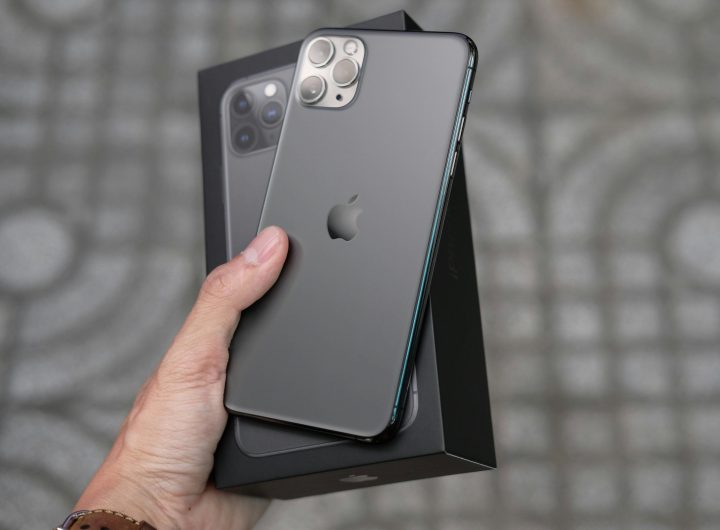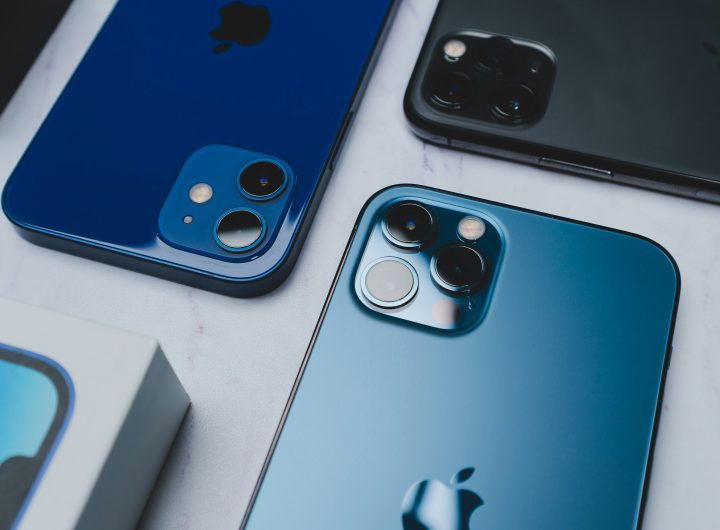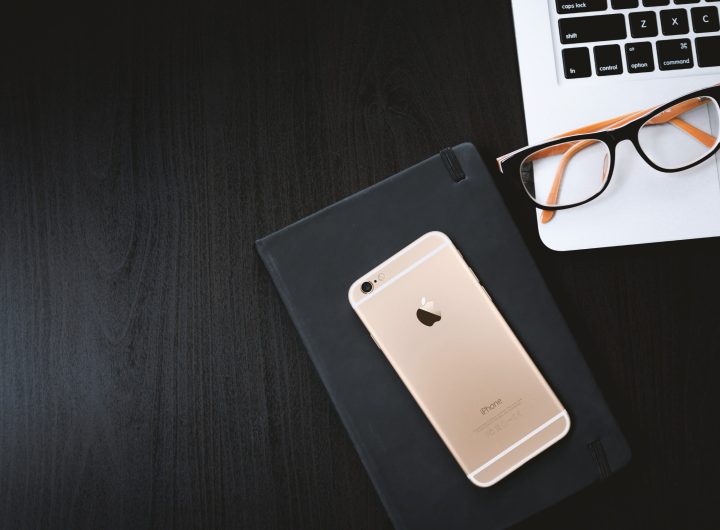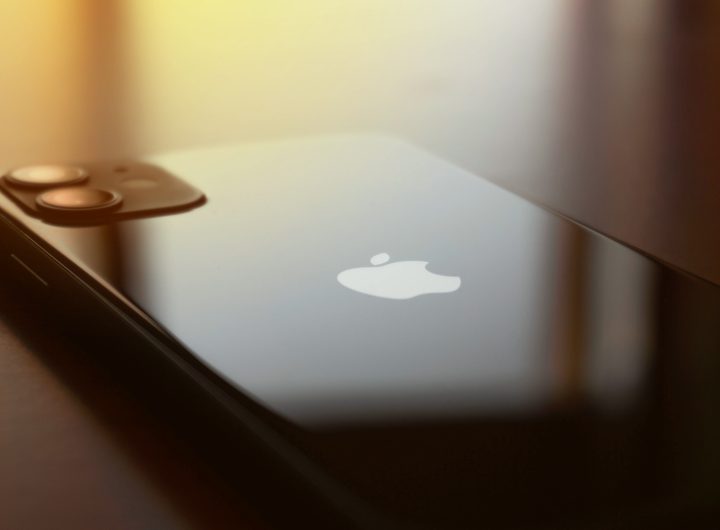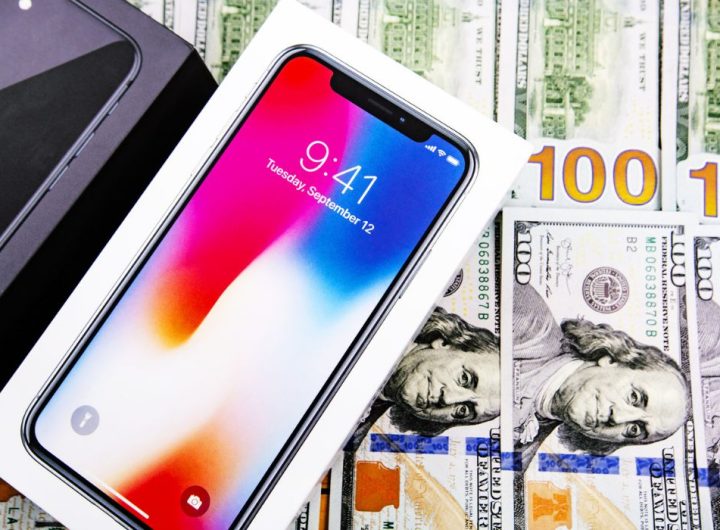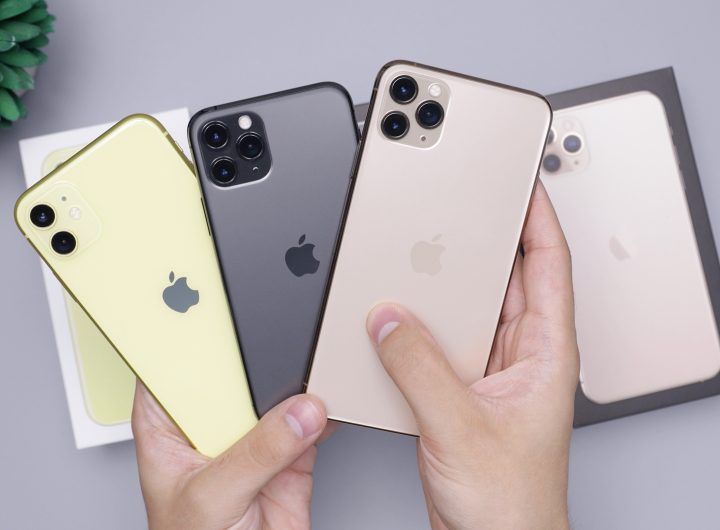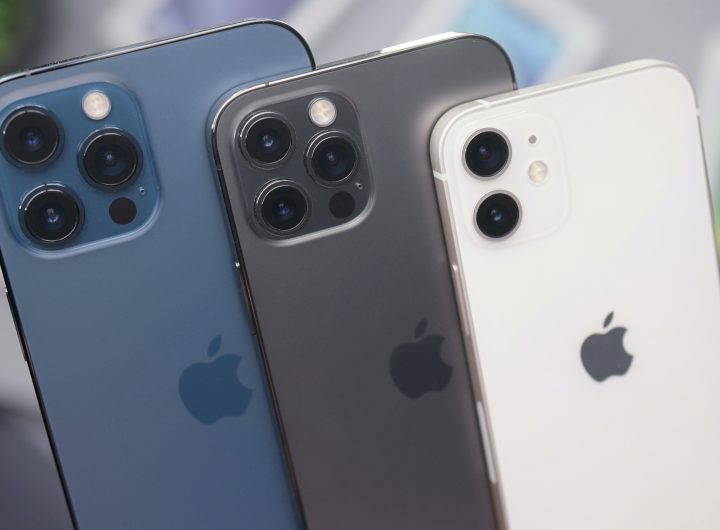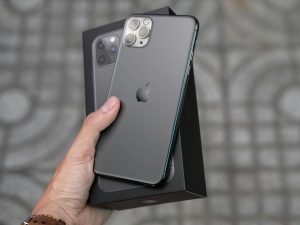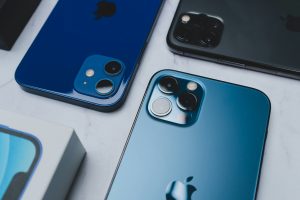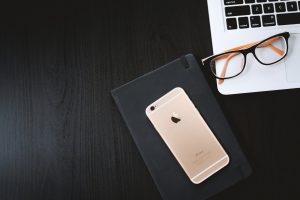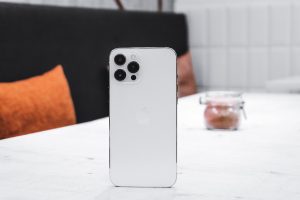Are you looking for a sustainable way to sell your old devices in New Orleans? Look no...
iPhones
Mobile phones, also known as cell phones or smartphones, have become an essential part of our daily lives. These devices allow us to stay connected, communicate with others, access the internet, and perform a wide range of tasks on the go. With advancements in technology, mobile phones have evolved to offer a multitude of features and functionalities. One of the most popular and sought-after mobile phone brands is Apple’s iPhone. The iPhone is known for its sleek design, user-friendly interface, and advanced features, making it a top choice for many consumers. It offers a seamless user experience with its powerful hardware and software integration, providing a smooth and efficient performance. Additionally, iPhones are known for their excellent camera quality, long battery life, and reliable security features, making them a preferred choice for photography enthusiasts and power users alike. Whether it’s for personal or professional use, a mobile phone or iPhone has become an indispensable tool in today’s fast-paced digital world.
History of Mobile Phones/iPhones
The history of mobile phones and iPhones is characterized by revolutionary advancements that have forever transformed the way we communicate and interact with technology. It all started with the development of the first mobile phone, which allowed people to make calls wirelessly and paved the way for portable communication devices.
However, it was the release of the first iPhone in 2007 that truly changed the game. With its sleek design and touchscreen interface, the iPhone introduced a new era of smartphones, bridging the gap between cell phones and personal computers. This milestone marked a shift towards a more interactive and intuitive user experience.
Since then, iPhones have become the epitome of innovation and cutting-edge technology. With each new release, Apple has consistently pushed the boundaries in terms of design and functionality, introducing features such as advanced cameras, water resistance, and larger batteries to cater to the needs of power users.
Today, iPhones are synonymous with superior quality and performance. They have become a symbol of status and personal preference, with millions of loyal customers worldwide. The impact of mobile phones and iPhones on the industry cannot be overstated, as they have paved the way for the development of countless Android devices and have shaped the way we live and work in the digital age.
Battery Life
Battery life is a crucial aspect of mobile phones today, as users increasingly rely on their devices for various tasks throughout the day. Recognizing this need, mobile phone manufacturers, including Apple, have made significant improvements over the years to enhance battery performance. With the introduction of more power-efficient processors, optimized software, and larger battery capacities, smartphones like the iPhone provide longer usage times and reduced dependency on frequent charging. This is especially beneficial for users who are constantly on the go or those who heavily rely on their phones for work, entertainment, or communication. Whether it’s streaming videos, gaming, or browsing the web, a longer battery life ensures that users can stay connected and productive without having to constantly worry about running out of power.
Factors Affecting Battery Life
Battery life is an essential factor to consider when purchasing a mobile phone or iPhone. Several factors can affect the battery life of these devices:
1. Screen size: Larger screens tend to consume more power due to increased display area and higher brightness levels.
2. Processor power: High-performance processors require more energy to run demanding tasks, leading to faster battery drain.
3. Usage patterns: The way you use your device can significantly impact battery consumption. Activities like gaming, streaming, and video calls consume more power than simple tasks like texting or browsing.
Optimizing settings is crucial for maximizing battery efficiency. Adjusting screen brightness to a lower level, especially in well-lit environments, can save significant power. Additionally, enabling power-saving modes or reducing the frequency of notifications can help conserve energy.
Background apps play a significant role in battery drain. Closing unnecessary apps and preventing them from running in the background can prolong battery life. Customizing app refresh and location services settings can also contribute to power savings.
Tips to Extend Battery Life
To extend the battery life of your mobile phone or iPhone, there are several effective tips you can follow. One important practice is to optimize your device’s settings. Adjusting the screen brightness to a lower level, especially in well-lit environments, can help conserve battery power significantly. Enabling power-saving modes and reducing the frequency of notifications can also contribute to energy conservation.
Another feature that can help conserve battery power is fast charging. Many modern smartphones and iPhones support fast charging, which allows you to charge your device quickly. However, it is important to note that fast charging may not be suitable for every charging session, as it can generate more heat and potentially decrease battery lifespan. It is advisable to use fast charging sparingly and opt for regular charging when time is not a constraint.
In addition to optimizing settings and utilizing fast charging appropriately, it is recommended to avoid demanding tasks that consume a lot of battery power. Activities like gaming, video streaming, and excessive multitasking can drain your battery quickly. By minimizing the use of resource-intensive apps and sticking to simple tasks like texting or browsing, you can extend your device’s battery life.
By following these tips, you can extend the battery life of your mobile phone or iPhone, ensuring that you have enough power to get you through the day without needing frequent recharges.
Best Practices for Extending Battery Life
To ensure your mobile phone or iPhone lasts throughout the day, it is crucial to adopt certain best practices that optimize battery life. First and foremost, charging overnight can be beneficial as it fully charges the device and allows you to start the day with a 100% battery. However, it is essential to note that prolonged charging can potentially degrade the battery over time, so it is advisable to unplug the device once it reaches its maximum capacity.
Another way to conserve battery power is by utilizing fast charging features. Both Android phones and iPhones support fast charging, which significantly reduces charging times. Nevertheless, it is important to use fast charging sparingly as it can generate heat and potentially decrease battery lifespan. It is recommended to switch to regular charging when you have ample time to spare.
Furthermore, avoiding demanding tasks that consume a lot of battery power can help extend battery life. Activities like gaming, video streaming, and excessive multitasking accelerate battery drain. By minimizing the use of resource-intensive apps and opting for simpler tasks, such as text messaging or browsing, you can conserve battery power and extend device usage.
Adjusting screen brightness can also contribute to longer battery life. Lowering the brightness level or enabling auto-brightness settings can significantly reduce power consumption, especially considering the screen is a major battery drainer.
While there are differences in battery life and charging speed between Android phones and iPhones, following these best practices can benefit both. Ultimately, personal preferences, device usage patterns, and specific models play a role in determining battery performance. By implementing these practices, you can make the most out of your battery life and ensure your mobile phone or iPhone serves you well throughout the day.
Safety Precautions When Using Batteries
When it comes to using batteries, it is crucial to prioritize safety precautions to prevent any potential risks or accidents. Mishandling or improper use of batteries can lead to serious consequences, including the risk of fire or explosion. To ensure your safety, it is important to follow these key guidelines:
1. Proper Storage: Always store batteries in a cool, dry place away from direct sunlight. Avoid placing them near flammable materials, as this can increase the risk of fire. Additionally, keep batteries out of reach of children and pets to prevent accidental ingestion or exposure.
2. Avoid Overcharging: Overcharging batteries can cause them to overheat, leading to potential fire hazards. Be mindful of the charging times and avoid leaving batteries connected to the charger for extended periods. Once fully charged, disconnect the battery from the charger promptly.
3. Protect from Heat Sources: Exposing batteries to heat sources can be dangerous as it can cause them to leak, rupture, or even explode. Keep batteries away from heat-emitting devices, direct sunlight, and high-temperature areas, such as hot cars or ovens.
4. Inspect for Damages: Before using a battery, always check for any signs of damage, such as swelling, leakage, or corrosion. Damaged batteries should not be used, as they can pose safety risks. Dispose of them properly according to local regulations.
By following these safety precautions, you can ensure a safer and more reliable experience when using batteries. Remember to exercise caution and prioritize safety at all times.
Android Phones vs. iPhones
When it comes to choosing a mobile phone, one of the biggest decisions you’ll need to make is whether to go for an Android phone or an iPhone. Both options have their unique features and advantages, catering to different preferences and needs. Android phones, which are powered by Google’s operating system, offer a wide range of options from various manufacturers, such as Samsung Galaxy and Google Pixel. These phones often provide larger screen sizes, customizable interfaces, and a diverse selection of apps. On the other hand, iPhones, with Apple’s iOS, are known for their sleek design, seamless integration with other Apple devices and services, and the highly curated App Store. iPhones are favored for their user-friendly interface, high-performance capabilities, and consistent software updates. Ultimately, the choice between an Android phone and an iPhone boils down to personal preference and requirements. Both options offer a range of features and functionality, ensuring that there is a device suitable for every individual.
Advantages of Android Phones
Android phones offer a range of advantages that make them a popular choice among users. One major advantage is their availability in a wide range of price ranges. From budget-friendly options to high-end flagship devices, Android phones cater to various budget preferences.
Another advantage of Android phones is the level of customization they offer. Users can personalize their devices by customizing the home screen, icons, widgets, and overall appearance. This flexibility allows users to tailor their Android experience to their personal preferences.
Expandable storage is another key advantage of Android phones. Many Android devices come with a microSD card slot, allowing users to easily expand their storage capacity. This means users can store more photos, videos, apps, and files without worrying about running out of space.
Additionally, most Android phones today feature USB-C ports. USB-C offers faster charging speeds, faster data transfer rates, and the convenience of reversible connections. This means users can charge their devices quickly and easily connect them to other devices without any hassle.
The advantages of Android phones include availability in different price ranges, customization options, expandable storage, and support for USB-C ports. These features contribute to the popularity and versatility of Android phones among users.
Disadvantages of Android Phones
Android phones have undoubtedly gained popularity for their customization options, but they come with a few disadvantages as well. One major hurdle faced by Android users is software updates. In the past, Android devices have been notorious for delayed or even nonexistent software updates. This can leave users with outdated operating systems and security vulnerabilities.
Another drawback is the lack of hardware consistency compared to iPhones. Android phones come in a wide variety of brands and models, each with its unique specifications and features. While this diversity may offer more choices, it can also result in compatibility issues and fragmentation within the Android ecosystem.
Although Android phones provide customization options, they may not be as flexible as iOS when it comes to personalization. iOS offers a more cohesive and user-friendly interface, whereas Android can sometimes feel cluttered and overwhelming, especially for users who are not tech-savvy.
In terms of storage, iPhones do not offer expandable storage options. Unlike some Android phones that have microSD card slots, iPhone users are limited to the internal storage capacity determined by the device they choose. However, iPhones do provide additional cloud storage options through iCloud.
Lastly, Android phones come in a wide range of price points, which can be both an advantage and a disadvantage. While this allows users to find a device that fits their budget, it also means that the quality and performance of Android phones can vary significantly. On the other hand, iPhones have a more consistent price range, offering a high-quality experience across different models.
Advantages of iPhones
iPhones offer several advantages that make them superior to Android phones. One significant advantage is the seamless integration within Apple’s ecosystem. From iPhones to MacBooks, iPads, and Apple Watches, all devices work together harmoniously, allowing for a seamless user experience. This integration allows users to effortlessly transfer files, sync calendars and contacts, and access content across multiple devices.
Another advantage is the quality of third-party apps available on the App Store. Apple’s strict app approval process ensures that only high-quality and secure apps make it to the store. This results in a curated collection of apps that are well-designed, optimized for performance, and free from malware, providing users with a safer and more reliable app experience compared to the fragmented Android app ecosystem.
The availability of a wide range of accessories is also a noteworthy advantage of iPhones. Due to their popularity and market dominance, there is a vast selection of cases, chargers, screen protectors, and other accessories specifically designed for iPhones. This allows users to personalize and enhance their iPhone experience according to their style and needs.
Furthermore, iPhones offer seamless continuity features, such as Handoff, Universal Clipboard, and iCloud, which enable users to start a task on one device and seamlessly continue it on another. This level of integration and convenience is unmatched by Android devices.
Lastly, the preference for iMessage and FaceTime among iPhone users is a significant advantage. iMessage allows for free and secure messaging between iPhone users, with features like read receipts, end-to-end encryption, and seamless syncing across devices. FaceTime offers high-quality video and audio calling exclusively for Apple devices, enhancing the overall communication experience.
Disadvantages of iPhones
While iPhones have numerous advantages, there are also some disadvantages that users should consider. One limitation is the limited customization options compared to Android devices. Apple’s iOS operating system provides a streamlined and secure experience, but it can be restrictive when it comes to personalization and customization preferences. Android phones offer more flexibility in terms of customizing the user interface, installing third-party apps, and accessing system settings.
Another drawback of iPhones is their higher price range compared to most Android phones. Apple devices are generally more expensive, especially the latest models, which may not fit within everyone’s budget. Android devices, on the other hand, offer a range of options with different price points, making them more accessible to a wider audience.
Additionally, iPhones have restrictions on file management. Transferring files between the device and a computer can be more complicated compared to Android, which offers a more straightforward file management system. This can be an inconvenience for users who frequently transfer or organize large amounts of data.
Lastly, some iPhone models may have shorter battery life compared to certain Android devices. Although Apple has made improvements in battery efficiency over the years, some Android phones offer larger batteries and power-saving features. This can be a concern for power users or individuals who heavily rely on their smartphones throughout the day.
Samsung Galaxy and iPhone SE Overviews
Samsung Galaxy and iPhone SE are two popular mobile phone options on the market. The Samsung Galaxy series offers a wide range of models with varying features and price points, catering to different user preferences. These Android devices provide users with a massive screen, extra features, water resistance, and a dynamic island for easy access to apps. On the other hand, Apple’s iPhone SE is known for its compact size, reminiscent of older iPhone models. It offers a powerful device with a smaller form factor, making it a great choice for those who prefer a more pocket-friendly phone. The iPhone SE also boasts a powerful rear camera, Apple’s renowned App Store, and seamless integration with other Apple devices.
Features and Specifications of Samsung Galaxy
The Samsung Galaxy is a flagship smartphone that offers a range of impressive features and specifications. One of its standout features is its exceptional camera quality. With high-resolution rear cameras, users can capture images and videos with stunning clarity and detail. The Samsung Galaxy also offers various shooting modes and editing options, allowing users to enhance their photos and unleash their creativity.
In terms of storage options, Samsung provides different capacities to suit individual needs. From 128 GB to a whopping 1 TB, users can easily store a vast amount of photos, videos, and apps without worrying about running out of space. The Samsung Galaxy also supports expandable storage, giving users the flexibility to add even more storage if required.
When it comes to pricing, the Samsung Galaxy offers a range of options to cater to different budgets. With a variety of models available, users can choose the one that best fits their needs and preferences. Whether you’re a photography enthusiast, a power user, or someone who values sleek design and performance, there is a Samsung Galaxy phone for everyone.
Overall, the Samsung Galaxy combines top-of-the-line features, stunning camera quality, ample storage options, and a range of pricing choices. It is a reliable and popular choice for smartphone users who value innovation, performance, and versatility.
Features and Specifications of iPhone SE
The iPhone SE is a compact yet powerful device that offers a range of features and specifications. Its design is reminiscent of the classic iPhone look, with a sleek and compact design that fits comfortably in the hand.
The iPhone SE boasts a 4.7-inch Retina HD display, providing vibrant colors and sharp images. Its 12-megapixel rear camera captures stunning photos and videos, while the front-facing camera allows for high-quality selfies.
Under the hood, the iPhone SE is powered by the A13 Bionic chip, which is the same chip used in the iPhone 11. This means you can expect fast and smooth performance, whether you’re multitasking or playing graphics-intensive games.
In terms of storage capacity, the iPhone SE offers options of 64GB, 128GB, and 256 GB. This gives users ample space to store their photos, videos, apps, and more.
The iPhone SE also features Touch ID for secure and convenient unlocking. Additionally, it supports wireless charging and is water and dust-resistant.
Overall, the iPhone SE offers a compact and powerful package, with its impressive camera capabilities, speedy processor, and ample storage capacity. It is a great choice for those looking for a small yet mighty device.
Conclusion
In conclusion, the choice between Android phones and iPhones will depend on personal preferences, budget, and specific needs. Whether you prioritize battery life, camera quality, app selection, or other features, it’s important to carefully consider these factors before making a decision. Both platforms have a dedicated user base and continue to innovate, ensuring that there is a mobile phone option for everyone.

